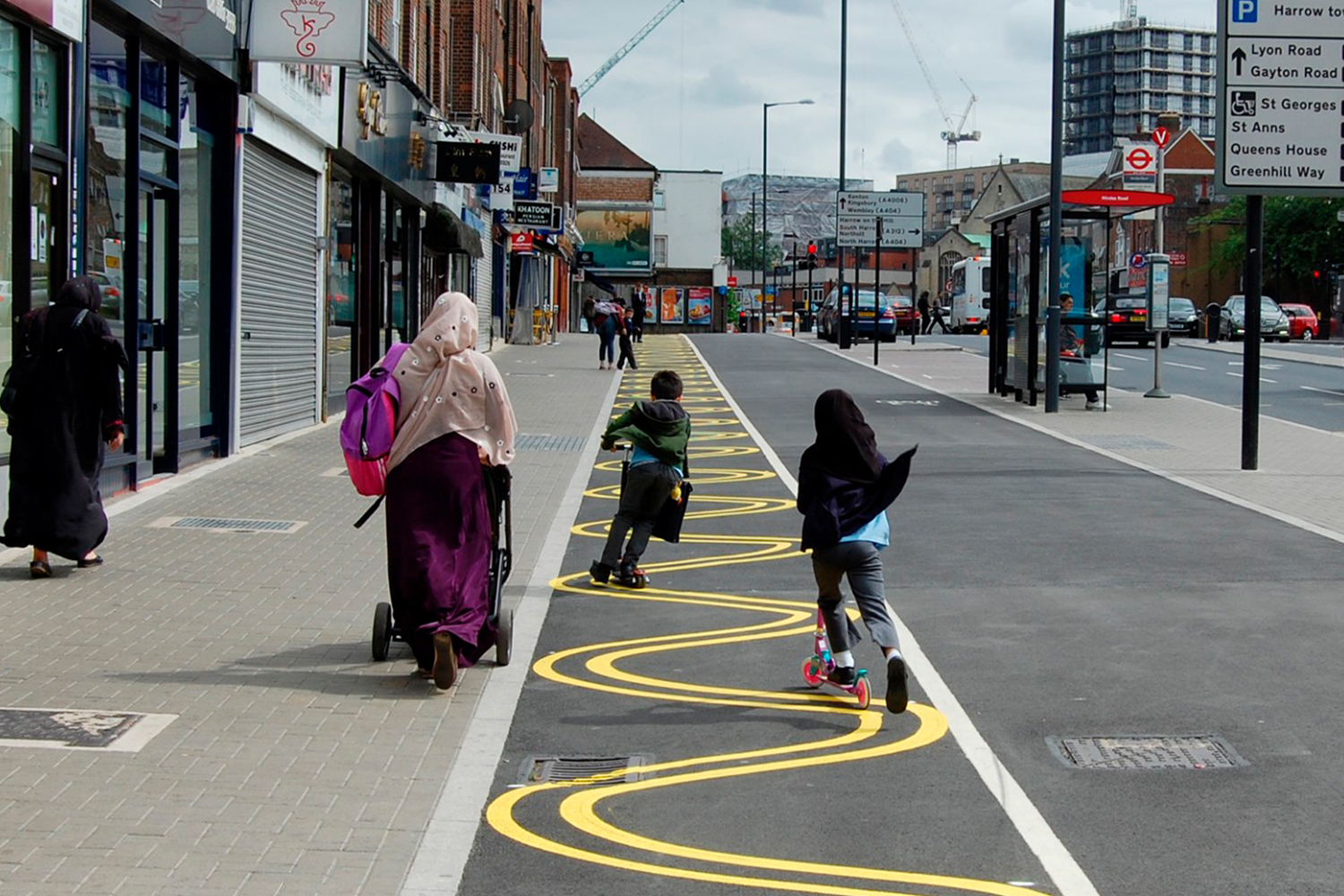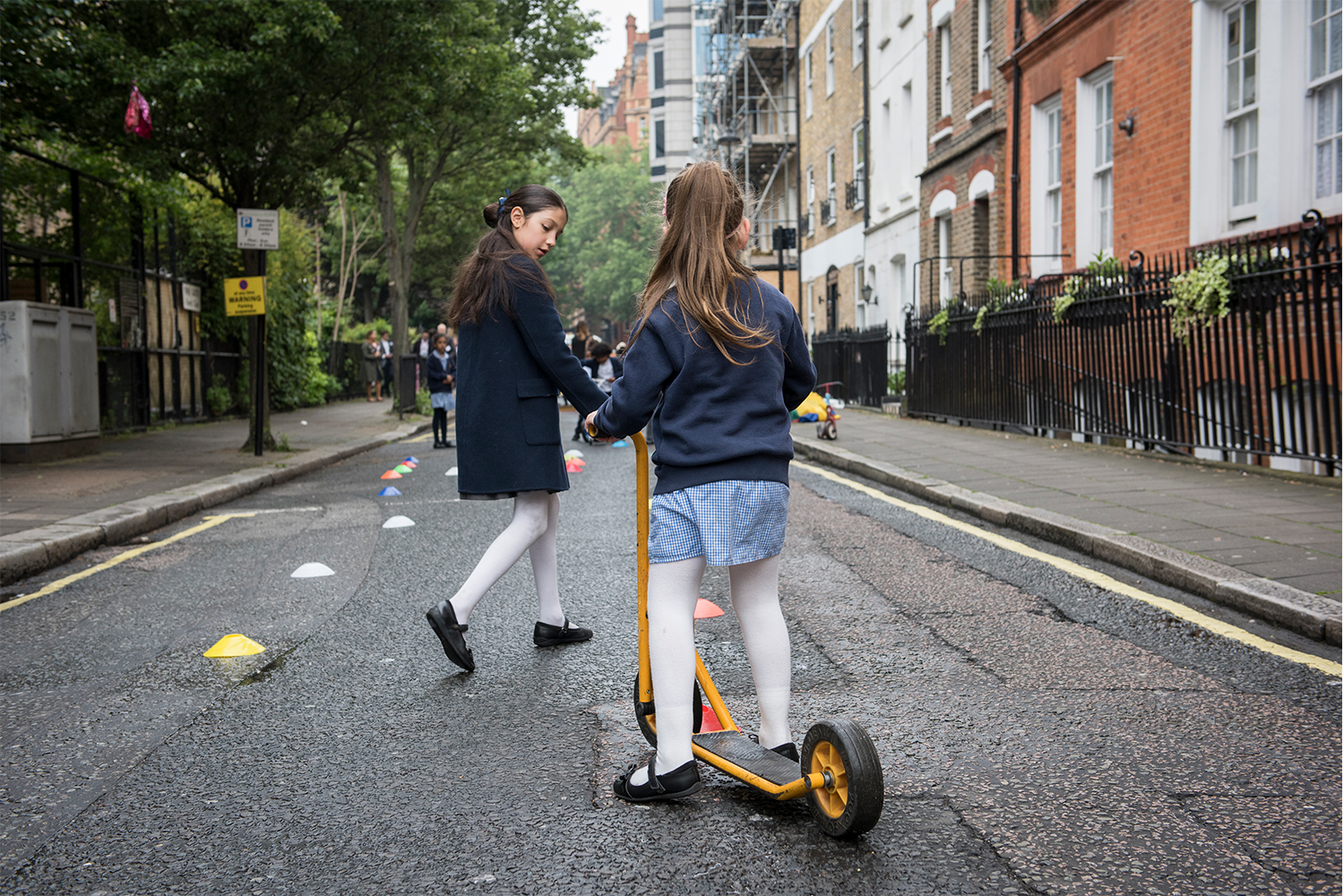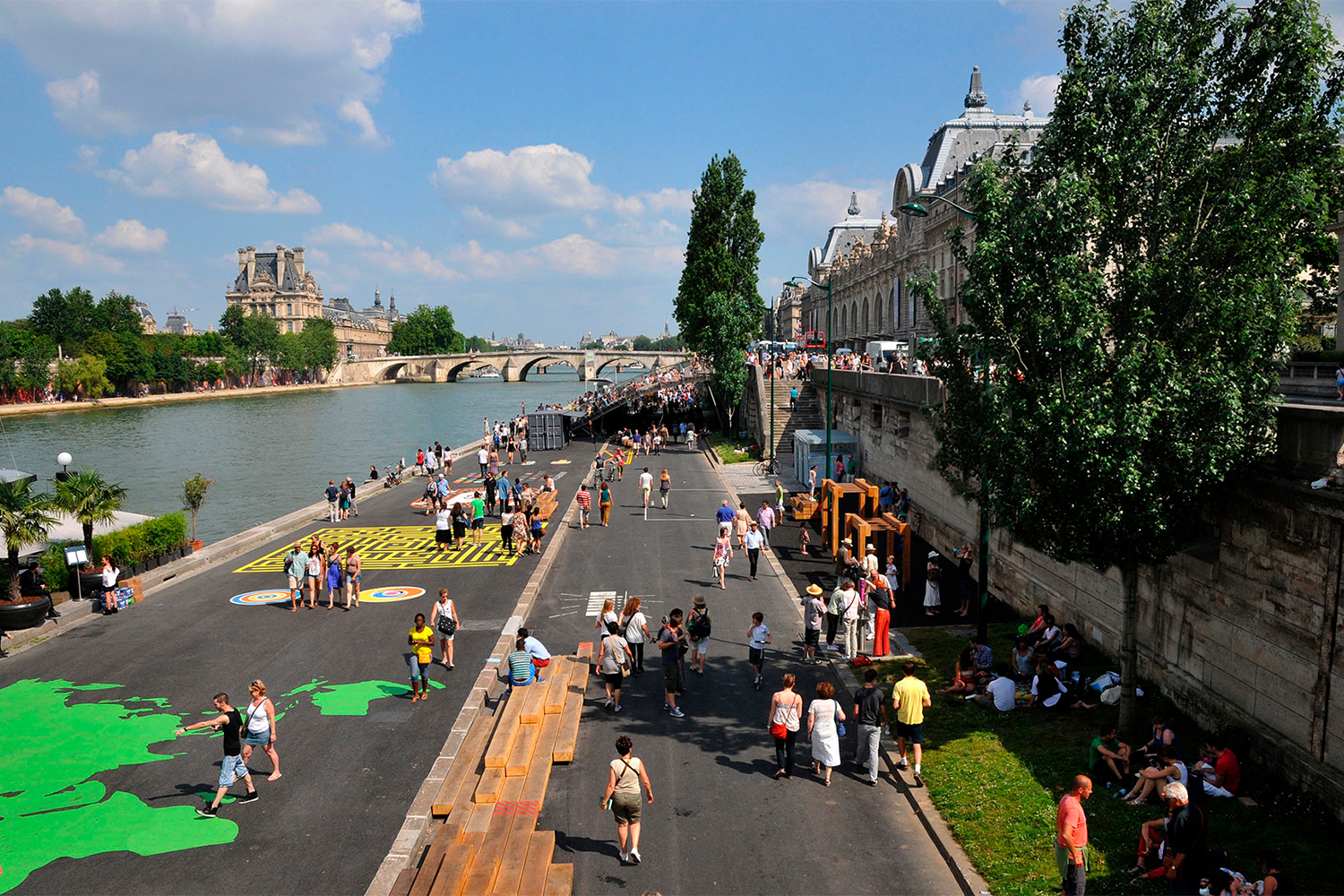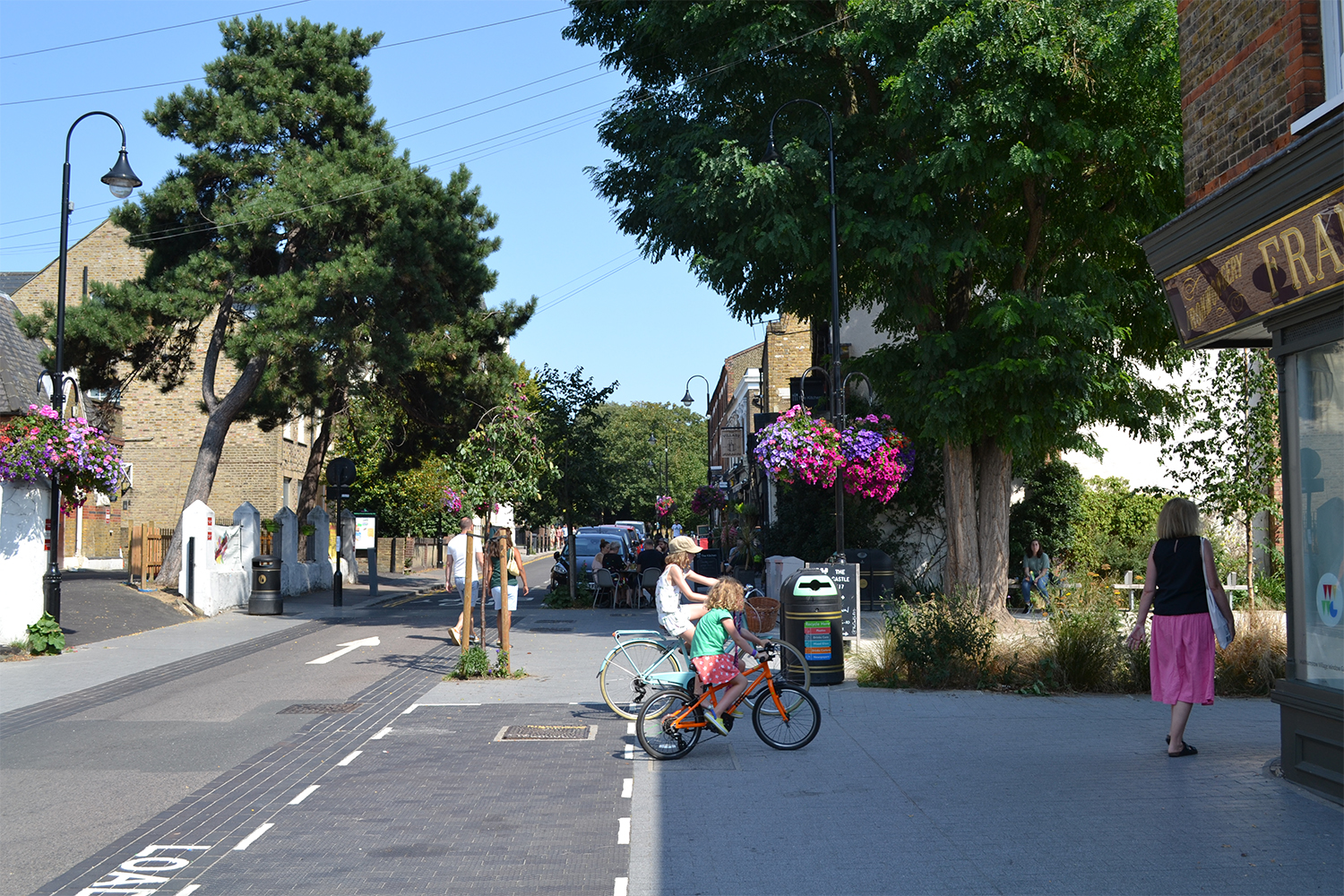


MAKING LONDON CHILD-FRIENDLY
Designing for children and young people

Station Road Harrow, by Europa (Source: Mark Smith)
Year
2019 – 2020
Service
Research
Client
Greater London Authority (GLA)
Collaborators
Erect Architecture
Location
London
With the population of young people in London set to rise rapidly over the next few decades, Publica and Erect Architecture have concluded their research for the Making London Child-Friendly report for The Mayor’s Good Growth by Design programme, highlighting how the design of the built environment can increase opportunities for young Londoners to become happier and healthier, by becoming independently mobile within their neighbourhoods and the city.
Developed in collaboration with the Greater London Authority, the report acts a catalyst to make London’s built environment more child-friendly and accessible for young people. The four lenses of the inquiry – policy, participation, management and design – promote an integrated and holistic approach to independent mobility: the freedom to occupy and move around the public realm without adult supervision.
Independent mobility is in decline, with significant consequences for the physical, social and mental development and health of people under the age of 18. Between 1971 and 2010, the number of children in the UK of primary school age allowed to walk to school by themselves has fallen from 86 percent to 25 percent.

“Independent mobility is a right in itself and children in London should have the freedom to safely and happily move around our city. A child-friendly city should contain a good combination of things to do, places to go, and the ability to easily move between them.”
ANNA MANSFIELD, DIRECTOR OF STRATEGY AND RESEARCH, PUBLICA
Moving towards a more child-friendly city
Making London Child-Friendly examines best practice examples from around the world and identifies a range of recommendations for built environment practitioners to consider, in order to facilitate the independent movement of children and young people.




The Mayor of London school air quality audit programme
Image © Greater London Authority
Parc Rives de Seine, Paris
Image © Franklin Azzi Architecture/Jacques Leroy
Mini-Holland, LB Waltham Forest
Image © Publica
Station Road Harrow, by Europa
Image © Mark Smith

“This report is a step change in how we might think about designing our cities for children; giving them a more prominent position and shifting from thinking about play ‘spaces’ towards a more holistic and strategic approach.”
DINAH BORNAT, MAYOR'S DESIGN ADVOCATE, 'YOUNG PEOPLE AND THE CITY' SOUNDING BOARD CHAIR, AND ZCD ARCHITECTS DIRECTOR
Next steps for London
This report is intended as a facilitator for a continued process of making London’s built environment more child-friendly and accessible for young people through the development of dedicated design implementation. It launched at City Hall on Monday 27 January 2020, with presentations from Jules Pipe CBE, the Deputy Mayor for Planning, Regeneration and Skills; Joanne McCartney, Assembly Member and Deputy Mayor for Education and Childcare; the Mayor of Hackney Philip Glanville and Publica’s Director of Strategy and Research Anna Mansfield.
MAKING LONDON CHILD-FRIENDLY
Designing for children and young people

Station Road Harrow, by Europa (Source: Mark Smith)
Year
2019 – 2020
Service
Research
Client
Greater London Authority (GLA)
Collaborators
Erect Architecture
Location
London
With the population of young people in London set to rise rapidly over the next few decades, Publica and Erect Architecture have concluded their research for the Making London Child-Friendly report for The Mayor’s Good Growth by Design programme, highlighting how the design of the built environment can increase opportunities for young Londoners to become happier and healthier, by becoming independently mobile within their neighbourhoods and the city.
Developed in collaboration with the Greater London Authority, the report acts a catalyst to make London’s built environment more child-friendly and accessible for young people. The four lenses of the inquiry – policy, participation, management and design – promote an integrated and holistic approach to independent mobility: the freedom to occupy and move around the public realm without adult supervision.
Independent mobility is in decline, with significant consequences for the physical, social and mental development and health of people under the age of 18. Between 1971 and 2010, the number of children in the UK of primary school age allowed to walk to school by themselves has fallen from 86 percent to 25 percent.

“Independent mobility is a right in itself and children in London should have the freedom to safely and happily move around our city. A child-friendly city should contain a good combination of things to do, places to go, and the ability to easily move between them.”
ANNA MANSFIELD, DIRECTOR OF STRATEGY AND RESEARCH, PUBLICA
Moving towards a more child-friendly city
Making London Child-Friendly examines best practice examples from around the world and identifies a range of recommendations for built environment practitioners to consider, in order to facilitate the independent movement of children and young people.




The Mayor of London school air quality audit programme
Image © Greater London Authority
Parc Rives de Seine, Paris
Image © Franklin Azzi Architecture/Jacques Leroy
Mini-Holland, LB Waltham Forest
Image © Publica
Station Road Harrow, by Europa
Image © Mark Smith

“This report is a step change in how we might think about designing our cities for children; giving them a more prominent position and shifting from thinking about play ‘spaces’ towards a more holistic and strategic approach.”
DINAH BORNAT, MAYOR'S DESIGN ADVOCATE, 'YOUNG PEOPLE AND THE CITY' SOUNDING BOARD CHAIR, AND ZCD ARCHITECTS DIRECTOR
Next steps for London
This report is intended as a facilitator for a continued process of making London’s built environment more child-friendly and accessible for young people through the development of dedicated design implementation. It launched at City Hall on Monday 27 January 2020, with presentations from Jules Pipe CBE, the Deputy Mayor for Planning, Regeneration and Skills; Joanne McCartney, Assembly Member and Deputy Mayor for Education and Childcare; the Mayor of Hackney Philip Glanville and Publica’s Director of Strategy and Research Anna Mansfield.